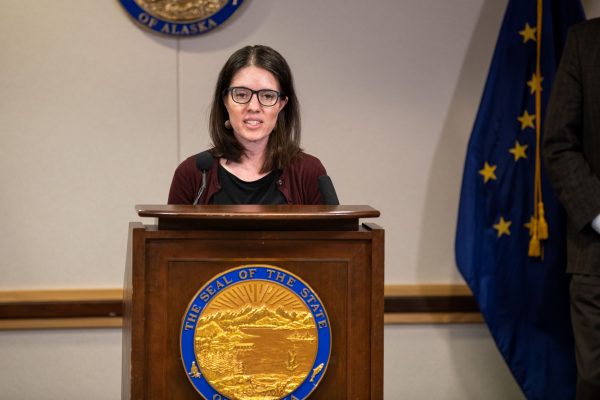
Alaskans continue to see what’s called “community spread” of COVID-19 — when people contract the disease without knowing who they got it from.
For state Chief Medical Officer Anne Zink, that’s a reason for Alaskans to remain vigilant.
“It’s no time to let our guard down,” she said during a Monday news conference. “If you can’t name everyone you spent more than 10 minutes with in the last week, then you’re probably spending too much time with too many people.”
RELATED:Listen as Anne Zink and Governor Mike Dunleavy discuss the delicate process of reopening Alaska’s economy on Talk of Alaska
The state is tracking the three ways Alaskans can contract the virus: through travel, from family members and other close contacts (known as “secondary” acquisition), and by community spread.
Zink said that the state must go 28 days without a community case to say it doesn’t have community spread. That’s far from happening — community cases were found in Anchorage on April 21 and in the Kenai Peninsula Borough on April 17. And more community cases could be found from positive tests that are still being investigated.
When someone tests positive for COVID-19, the state wants to find out who has spent more than 10 minutes within 6 feet of that person. And those contacts will be asked to quarantine themselves for 14 days.
Get the latest coverage of the coronavirus in Alaska.
“And so the more you’re kind of connecting to other people, the higher the chance is that you may (be) asked to be quarantined,” Zink said.
These investigations — known as contact tracing — are done by teams overseen by state epidemiologists and include public health nurses and local community workers.
Zink said based on some estimates, Alaska’s population could have anywhere from 50 to 700 contact tracers.
RELATED:From her home office yurt, Alaska’s chief medical officer navigates ‘uncharted territory’
There are currently more than 100 people doing that work for the state and for individual communities. While they have the capacity to investigate more cases than they are currently, the state is working towards having 150 contact tracers.
“It’s just like the epidemic,” she said. “We continue to watch it closely and try to stay ahead of that curve.”
Zink said the state may hire more contact tracers if needed.
Andrew Kitchenman is the state government and politics reporter for Alaska Public Media and KTOO in Juneau. Reach him at akitchenman@alaskapublic.org.




